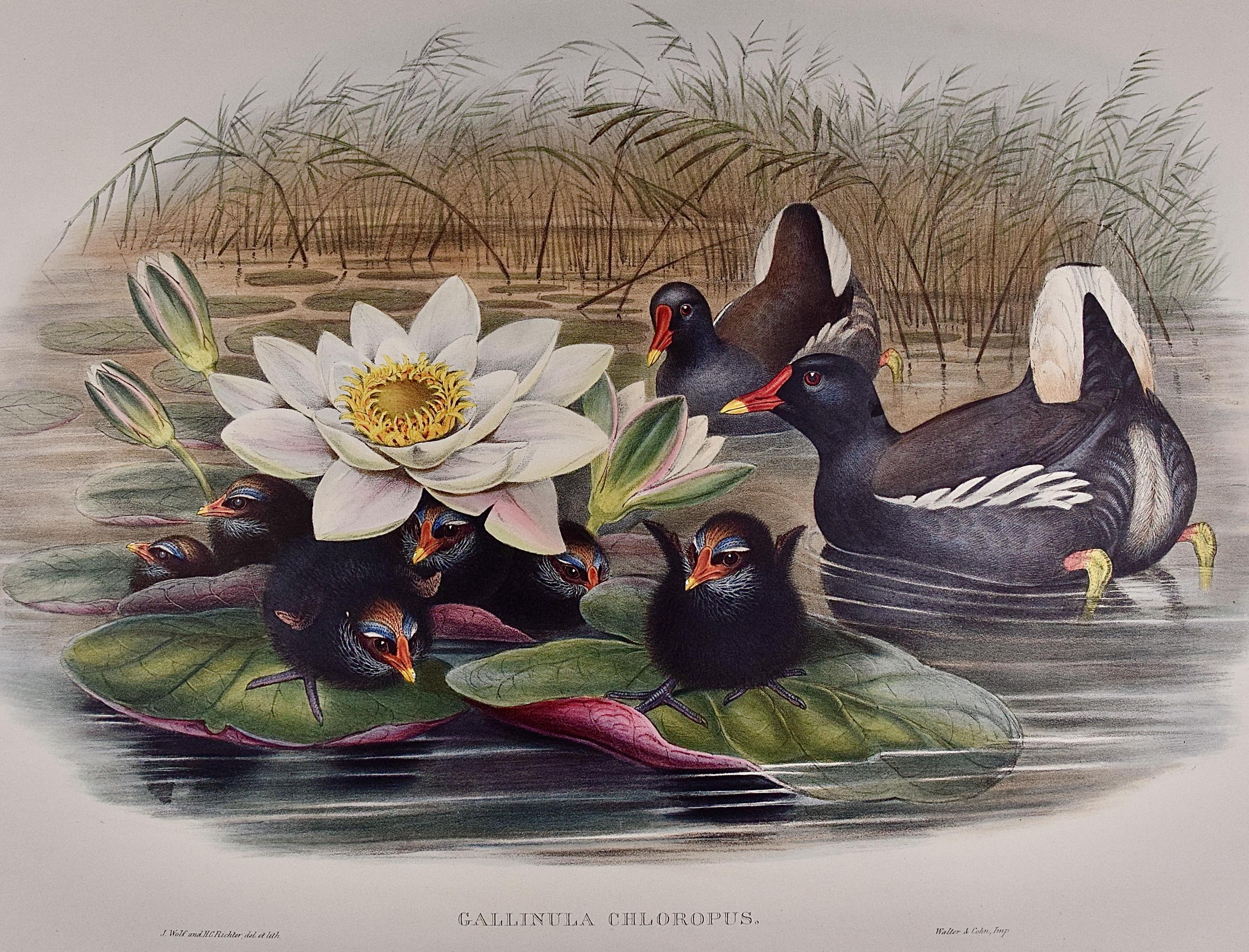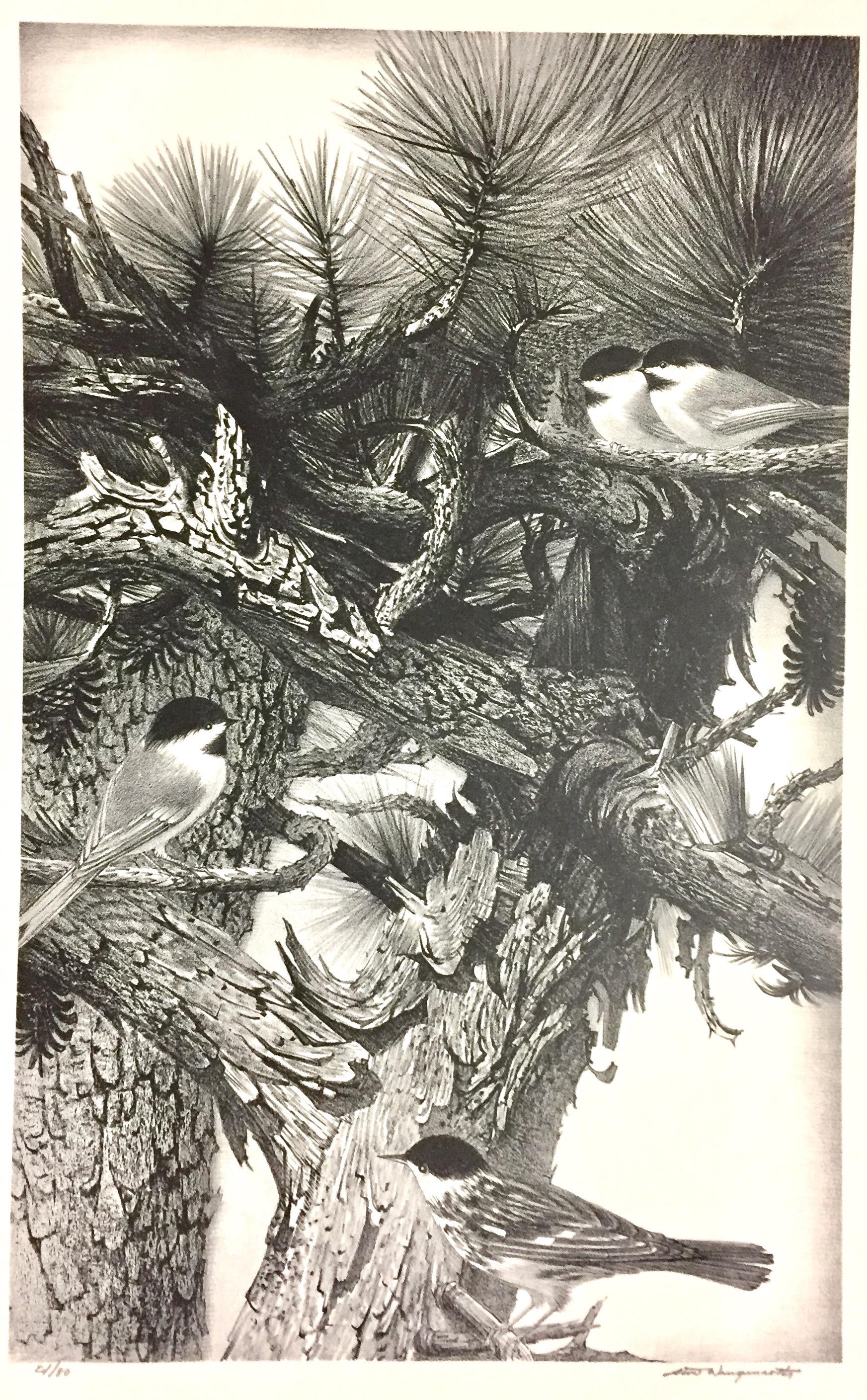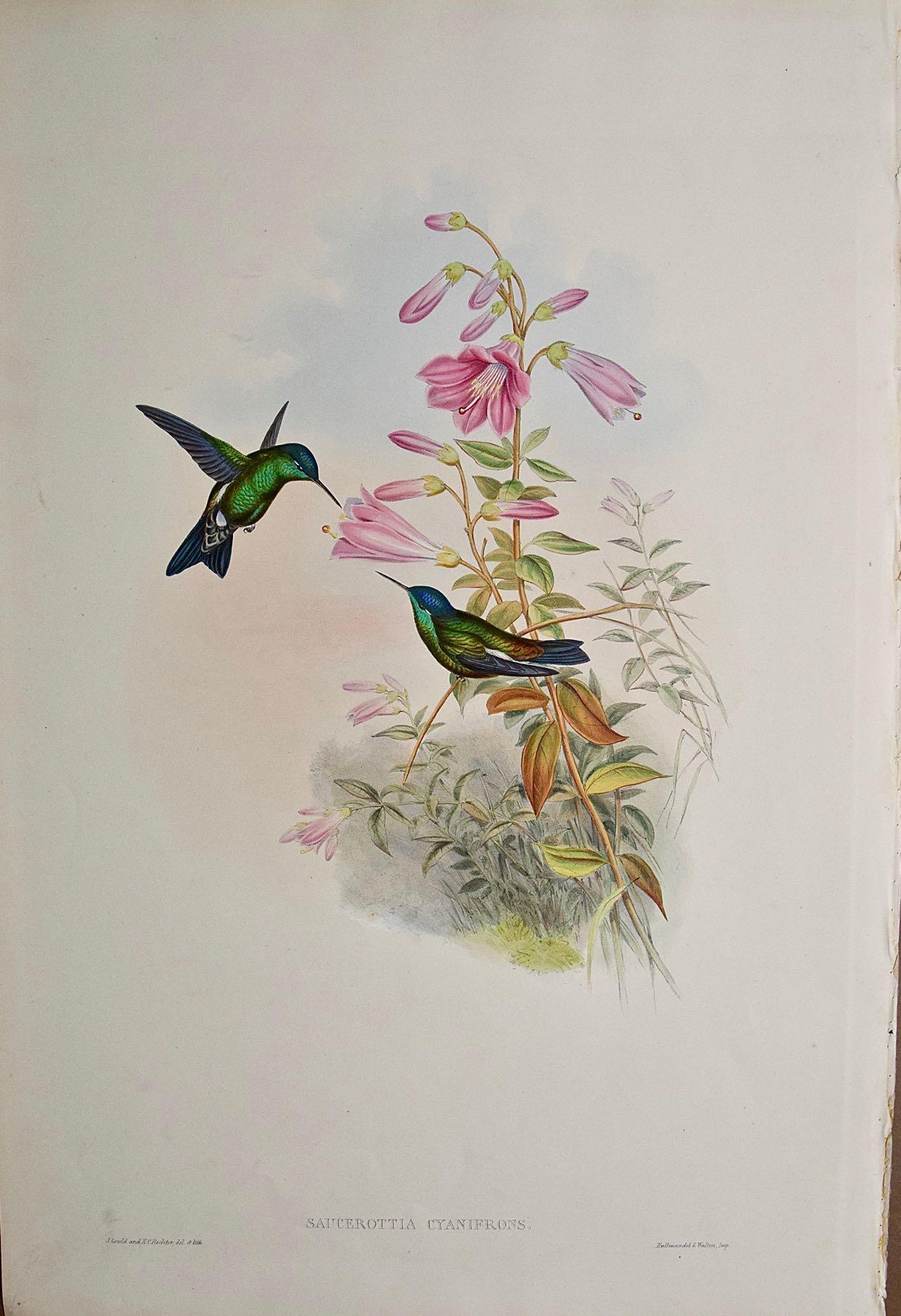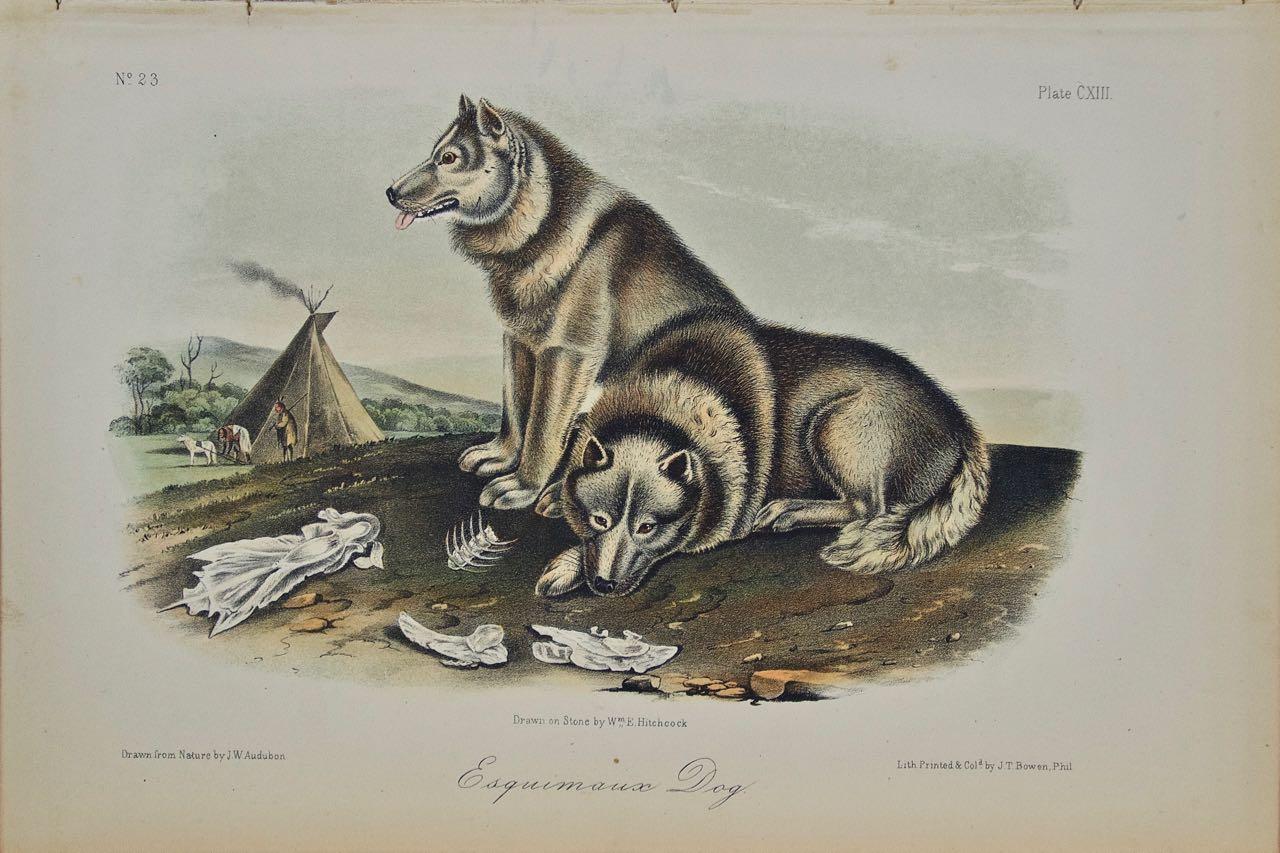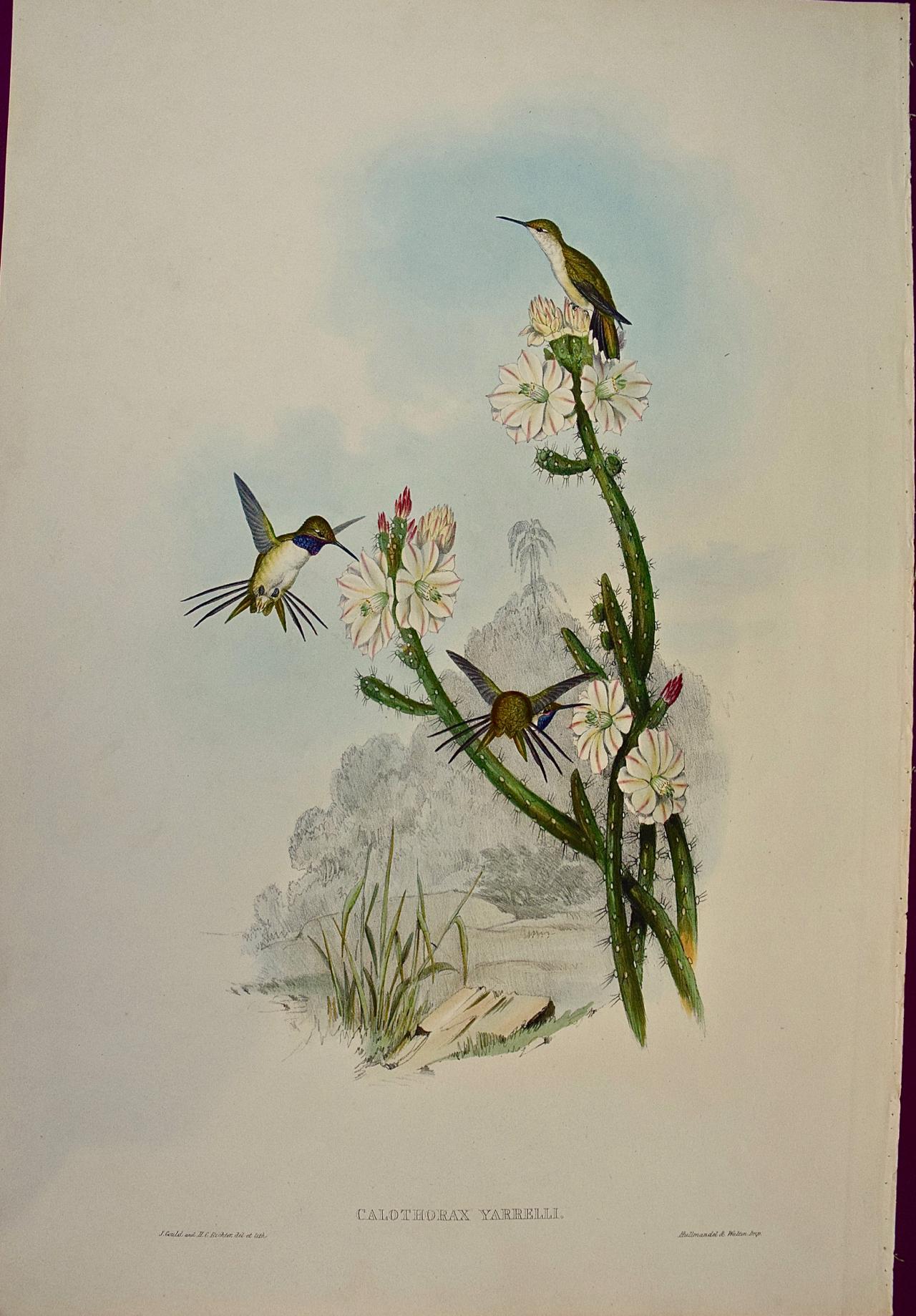After John James Audubon"Washington Sea Eagle": An Original Audubon Hand-colored Lithograph 1856
1856
About the Item
- Creator:
- Creation Year:1856
- Dimensions:Height: 10.5 in (26.67 cm)Width: 6.75 in (17.15 cm)
- Medium:
- Movement & Style:
- Period:
- Framing:Framing Options Available
- Condition:
- Gallery Location:Alamo, CA
- Reference Number:
After John James Audubon
John James Audubon was an American ornithologist, naturalist and painter. His combined interests in art and ornithology turned into a plan to make a complete pictorial record of all the bird species of North America. Audubon was notable for his extensive studies documenting all types of American birds and for his detailed illustrations that depicted the birds in their natural habitats. His major work, a color-plate book entitled The Birds of America (1827–1839), is considered one of the finest ornithological works ever completed. Audubon is also known for having identified 25 new species. He is the namesake of the National Audubon Society and his name adorns a large number of towns, neighborhoods, and streets in every part of the United States. Dozens of scientific names first published by Audubon are currently in use by the scientific community. Audubon made some excursions out West, where he hoped to record Western species he had missed, but his health began to fail. In 1848, he manifested signs of senility or possibly dementia from what is now called Alzheimer's disease, his noble mind in ruins. Audubon died at his family home in northern Manhattan on January 27, 1851. He is buried in the graveyard at the Church of the Intercession in the Trinity Church Cemetery and Mausoleum at 155th Street and Broadway in Manhattan, near his home. An imposing monument in his honor was erected at the cemetery, which is now recognized as part of the Heritage Rose District of NYC.
- ShippingRetrieving quote...Ships From: Alamo, CA
- Return PolicyA return for this item may be initiated within 7 days of delivery.
- A Family of Moorhens & Lilly Pad: A 19th C. Hand-colored Lithograph by GouldBy John Gould and Henry Constantine RichterLocated in Alamo, CAThis is an original 19th century hand-colored folio-sized lithograph entitled "Gallinula Chloropus" (Moorhen) by John Gould, published in his "Birds of Great Britain", published in London between 1862 and 1873. The print, which was drawn by Gould and Henry Richter and lithographed by Walter & Cohn, depicts a family of Moorhens, including two adults and six babies in a beautiful landscape. The adults are in the water and the babies are lying on the leaves a flowering lilly pad. This striking Gould hand-colored moorhen family lithograph is augmented with gum-arabic paint. The sheet measures 14.88" high and 21.75" wide. It is in excellent condition, other than a spot in the upper portion of the right margin and two small spots at the edge of the lower margin on the left. The original descriptive text pages from Gould's 19th century publication are included. There are several other unframed Gould hummingbird lithographs available on our 1stdibs and InCollect storefronts. Two or more of these striking lithographs would make an attractive display grouping. A discount is available for purchase of a set depending on the number. These additional Gould hummingbirds may be viewed by typing Timeless Intaglio...Category
Mid-19th Century Naturalistic Animal Prints
MaterialsLithograph
- Hummingbirds: 19th C. Gould Hand-colored "Cyanifrons", Blue-capped SaucerottiaBy John Gould and Henry Constantine RichterLocated in Alamo, CAThis is a hand-colored folio sized lithograph entitled "Saucerottia Cyanifrons", Blue-capped Saucerottia Hummingbirds by John Gould, published in his "A Monograph of the Trochilidae, or Family of Humming-birds", published in London in 1850. The print, which was drawn by Gould and Henry Richter and lithographed by Hullmandel and Walton, depicts two green, blue and a little brown colored hummingbirds about a plant with green leaves and pink flowers. This beautiful Gould hand-colored hummingbird lithograph has a few very small faint spots, but it is otherwise in excellent condition. The original text page is included. There are other unframed Gould hummingbird...Category
Mid-19th Century Naturalistic Animal Prints
MaterialsLithograph
- "Esquimaux Dog": An Original 19th C. Audubon Hand-colored Quadruped LithographBy John James AudubonLocated in Alamo, CAThis is an original John James Audubon hand-colored royal octavo lithograph entitled "Esquimaux Dog", No. 23, Plate CXIII, from Audubon's "Quadrupeds of North America". It was drawn ...Category
Mid-19th Century Naturalistic Animal Prints
MaterialsLithograph
- Yarrell's Wood-star Hummingbirds: A 19th Century Hand-Colored Gould LithographBy John Gould and Henry Constantine RichterLocated in Alamo, CAThis is a hand-colored folio sized lithograph entitled "Calothorax Yarrelli", Yarrell's Wood-star Hummingbirds by John Gould, published in his "A Monograph of the Trochilidae, or Family of Humming-birds", published in London in 1850. The print, which was drawn by Gould and Henry Richter and lithographed by Hullmandel and Walton, depicts three green, white, grey, and a little blue colored hummingbirds amid green cactus plants with white and pink colored flowers. The hummingbirds are augmented by gum-arabic paint, which gives them an iridescent appearance in areas in which it is used. This beautiful Gould hand-colored hummingbird lithograph is in excellent condition. The original descriptive text page from Gould's 19th century publication is included. There are several other unframed Gould hummingbird...Category
Mid-19th Century Naturalistic Animal Prints
MaterialsLithograph
- Indian Wryneck Birds (Yunx indica): A 19th C. Gould Hand-colored LithographBy John Gould and Henry Constantine RichterLocated in Alamo, CAThis is a hand-colored folio sized lithograph entitled "Yunx indica" (Indian Wryneck) by John Gould from his monograph "The Birds of Asia", published in London in 1850-1883. The pri...Category
Mid-19th Century Naturalistic Animal Prints
MaterialsLithograph
- Caribou or American Reindeer: Original 19th C. Audubon Hand-colored LithographBy John James AudubonLocated in Alamo, CAThis is an original 19th century John James Audubon hand-colored quadruped lithograph entitled "Caribou or American Rein Deer", No. 26, Plate CXXVI, from Audubon's "Quadrupeds of Nor...Category
Mid-19th Century Naturalistic Animal Prints
MaterialsLithograph
- Stow Wengenroth, Friendly Neighbors (Birds)By Stow WengenrothLocated in New York, NYEdition of 80. Signed and numbered in pencil. Really, no one could draw on a lithographic stone like Stow Wengenroth. He drew many animals and birds...Category
Mid-20th Century Naturalistic Landscape Prints
MaterialsLithograph
- Terriers No. 1Located in Columbia, MOTerriers No. 1 1883-84 Chromolithograph 8.5 x 11 inchesCategory
1880s Naturalistic Animal Prints
MaterialsLithograph
- Dalmation & Bull TerrierLocated in Columbia, MODalmation & Bull Terrier 1883-84 Chromolithograph 8.5 x 11 inchesCategory
1880s Naturalistic Animal Prints
MaterialsLithograph
- DachsundsLocated in Columbia, MODachsunds 1883-84 Chromolithograph 8.5 x 11 inchesCategory
1880s Naturalistic Animal Prints
MaterialsLithograph
- American Crow 1858 Chromolithograph by J.J. Audubon Plate, Julius Bien EditionBy John James AudubonLocated in Paonia, COAmerican Crow by J.J. Audubon from his Birds of America folio shows an adult male crow in a Black Walnut bush with a nest of a Ruby-Throated Hummingbird in a branch below the crow. This original chromolithograph plate no. 226 is in good condition with a repairable water mark in the image on the left side as can be seen in the photos. The ” Birds of America” by John James...Category
1850s Naturalistic Animal Prints
MaterialsLithograph
- Terriers No. 2Located in Columbia, MOTerriers No. 2 1883-84 Chromolithograph 8.5 x 11 inchesCategory
1880s Naturalistic Animal Prints
MaterialsLithograph
